Nicholas Hawksmoor was an English architect. He was a leading figure of the English Baroque style of architecture in the late-seventeenth and early-eighteenth centuries. Hawksmoor worked alongside the principal architects of the time, Christopher Wren and John Vanbrugh, and contributed to the design of some of the most notable buildings of the period, including St Paul's Cathedral, Wren's City of London churches, Greenwich Hospital, Blenheim Palace and Castle Howard. Part of his work has been correctly attributed to him only relatively recently, and his influence has reached several poets and authors of the twentieth century.

The Albert Memorial, directly north of the Royal Albert Hall in Kensington Gardens, London, was commissioned by Queen Victoria in memory of her beloved husband Prince Albert, who died in 1861. Designed by Sir George Gilbert Scott in the Gothic Revival style, it takes the form of an ornate canopy or pavilion 176 feet (54 m) tall, in the style of a Gothic ciborium over the high altar of a church, sheltering a statue of the prince facing south. It took over ten years to complete, the £120,000 cost met by public subscription.
The architecture of Ireland is one of the most visible features in the Irish countryside – with remains from all eras since the Stone Age abounding. Ireland is famous for its ruined and intact Norman and Anglo-Irish castles, small whitewashed thatched cottages and Georgian urban buildings. What are unaccountably somewhat less famous are the still complete Palladian and Rococo country houses which can be favourably compared to anything similar in northern Europe, and the country's many Gothic and neo-Gothic cathedrals and buildings.

The Choragic Monument of Lysicrates near the Acropolis of Athens was erected by the choregos Lysicrates, a wealthy patron of musical performances in the Theater of Dionysus, to commemorate the prize in the dithyramb contest of the City Dionysia in 335/334 BCE, of which performance he was liturgist.
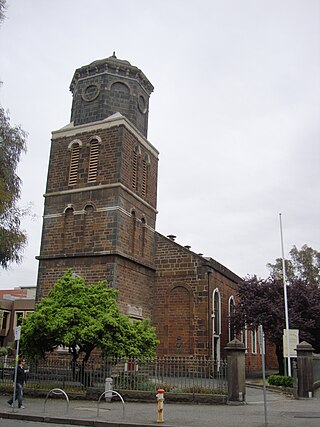
St James Old Cathedral, an Anglican church, is the oldest church in Melbourne, Australia, albeit not on its original site. It is one of the relatively few buildings in the central city which predate the Victorian gold rush of 1851. The building was demolished and relocated in 1914 to a corner site of King Street and Batman Street.
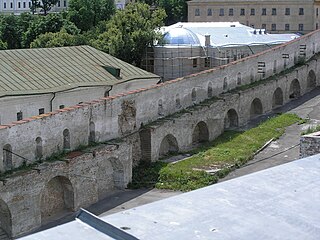
The Lavra fortification is a system of walls, towers and other constructions built for the protection of the Cave Monastery in Kyiv, the capital of Ukraine.

The Castle of Terena is a castle in the civil parish of Terena in the municipality of Alandroal in the Portuguese subregion of Alentejo Central. Since 1946, it has been listed as a National monument.
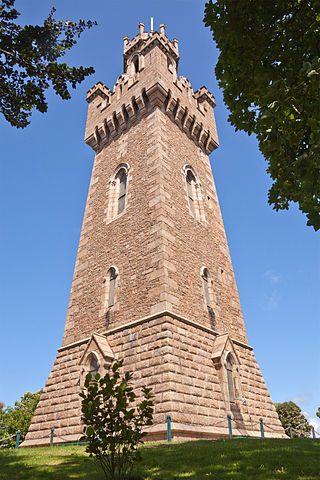
Victoria Tower is a monument in Saint Peter Port, Guernsey, erected in honor of a visit by Queen Victoria and Prince Albert to the island in 1846.

Teruel Cathedral or Catedral de Santa María de Mediavilla de Teruel is a Roman Catholic church in Teruel, Aragon, Spain. Dedicated to St. Mary, it is a notable example of Mudéjar architecture. Together with other churches in the town and in the province of Zaragoza, it has been listed as a UNESCO World Heritage Site since 1986.
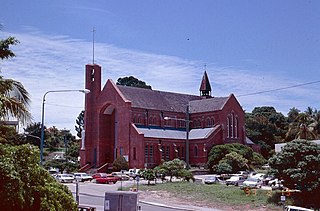
St James Cathedral is a heritage-listed cathedral of the Anglican Diocese of North Queensland at 36 Cleveland Terrace, Townsville, City of Townsville, Queensland, Australia. It was designed by Arthur Blacket and was built in 1887 by MacMahon & Cliffe. It was added to the Queensland Heritage Register on 21 October 1992.

The First Methodist Episcopal Church, also known as the Red Church, is a historic church located at 4451 Second Street in Port Hope, Michigan. It was listed on the National Register of Historic Places in 1987.
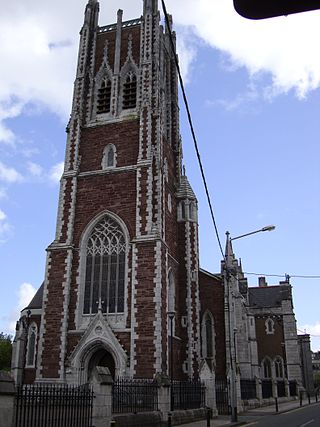
The Cathedral of Saint Mary and Saint Anne, also known as Saint Mary's Cathedral, The North Cathedral or The North Chapel, is a Roman Catholic cathedral located at the top of Shandon Street in Cork, Ireland. It is the seat of the Bishop of Cork and Ross, and the mother church of the Roman Catholic Diocese of Cork and Ross. Its name derived from the fact that it encompassed the ecclesiastical parish of St. Mary and the civil parish of St. Anne.

St Leonard's Church is in the village of Balderstone, Lancashire, England. It is an active Anglican parish church in the deanery of Whalley, the archdeaconry of Blackburn, and the diocese of Blackburn. The church is recorded in the National Heritage List for England as a designated Grade II listed building.

Skånela Church is a medieval Lutheran church in the Archdiocese of Uppsala in Stockholm County, Sweden. It is one of the oldest churches in Stockholm County.

St James' Church in Handsworth, Birmingham, England was erected as an Anglican church in 1838–1840 on land given by John Crockett of the nearby New Inns Hotel. The architect was Robert Ebbles of Wolverhampton, who specialised in Gothic Revival churches. A new chancel was added in 1878 and the building was rebuilt in 1895, to designs by J. A. Chatwin. The original chancel thus became the north chapel, the original nave became the north aisle, and the original western tower was redesignated as the north-west tower. The additions were a new chancel, a nave, and a south aisle. Chatwin's Decorated style, red-brick features contrasted with the Early English style stonework of the original building.
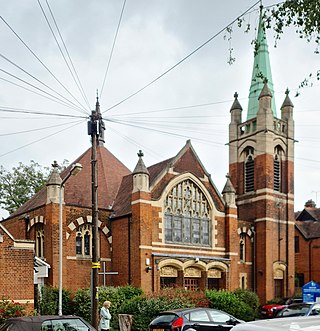
Chingford United Reformed Church is a Grade II listed United Reformed Church at Buxton Road, Chingford, in the London Borough of Waltham Forest.

The San Ildefonso de Toledo Parish Church, commonly known as Guiguinto Church, is an 18th-century, Baroque church located along the McArthur highway, Brgy. Poblacion, Guiguinto, Bulacan, Philippines. The parish church, under the aegis of Saint Ildephonsus, Bishop of Toledo, is under the jurisdiction of the Roman Catholic Diocese of Malolos.

St Paul's Anglican Church is a heritage-listed church at 178-202 Adelaide Street, Maryborough, Fraser Coast Region, Queensland, Australia. It was designed by Francis Drummond Greville Stanley and built from 1878 to 1921. It was added to the Queensland Heritage Register on 21 October 1992.

Edgar George Papworth Snr was an English sculptor. He studied at the Royal Academy of Arts where he later exhibited works; he created sculptures of classical themes, and of notable people of the day.

St Stephen's Presbyterian Church and Manse, also known as Queanbeyan Presbyterian Church, is a heritage-listed Presbyterian church and manse at 2 Morisset Street, Queanbeyan, Queanbeyan-Palerang Region, New South Wales, Australia. It was designed by Alberto Dias Soares (church) and James Barnet (manse) and built from 1872 to 1883 by Thomas Priest (stonemason), Thomas Jordan (carpenter), John Kealman (carpenter). The property is owned by Presbyterian Church of NSW Property Trust. It was added to the New South Wales State Heritage Register on 24 May 2019.



















